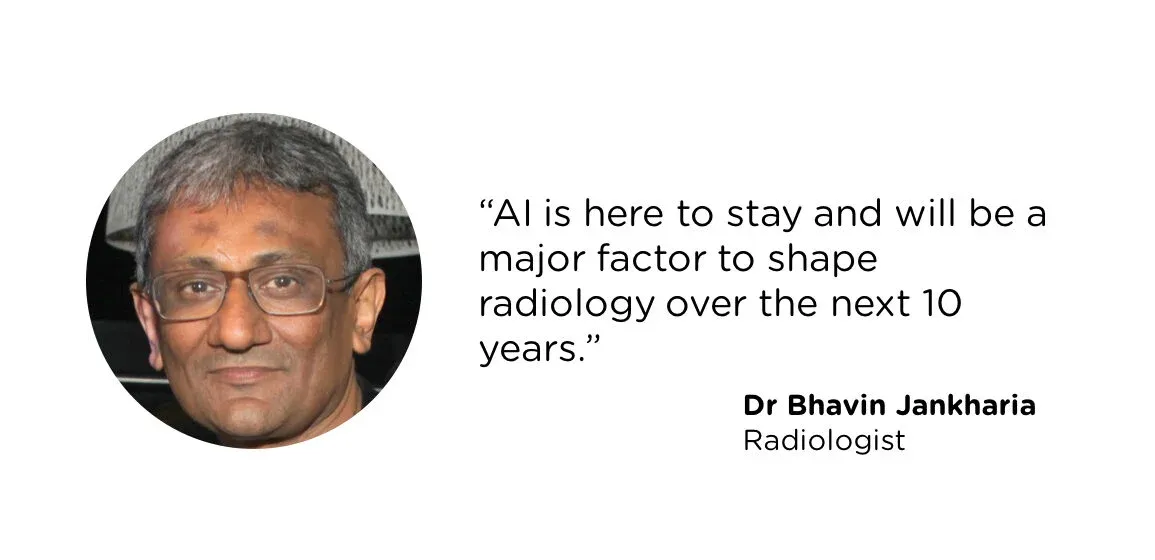Dr Bhavin Jankharia is one of India’s leading radiologists, former president of the IRIA as well as a renowned educator, speaker and writer. Dr Jankharia’s radiology and imaging practice, “Picture This by Jankharia”, is known for being an early adopter of innovation and for pioneering new technologies in radiology.

Back
Q&A with Dr Jankharia on artificial intelligence in radiology.
How do you see Artificial Intelligence in radiology evolving in the future?
AI is here to stay and will be a major factor to shape radiology over the next 10 years. It will be incorporated in some form or the other in protocols and workflows across the spectrum of radiology work and across the globe.
You have been an early adopter of AI in your practice. What would your advice be to other institutions globally who are considering incorporating AI into their workflow?
It is about questions that need to be answered. At present, AI is good at solving specific questions or given numerical data from CT scans of the abdomen and pelvis with respect to bone density and aortic size, etc. Wherever there is a need for such issues to be addresses, AI should be incorporated into those specific workflows. We still haven’t gotten to the stage where AI can report every detail in every scan and that may actually never happen.
It may never happen that AI can do what a radiologist does, but looking at the near team (say next 3-5 years), what do you think AI can achieve? (For example, what tasks can it automate? Can it improve reporting accuracy? ) Where will the biggest value addition be?
Its basic value addition will be to take away drudge work. Automated measurements, automated checking of densities, enhancement patterns, perhaps even automated follow-ups for measurements of abnormal areas already marked out on the first scans and the like.
Now that you have experienced AI in practice, how would you differentiate this technology from traditional CAD solutions that have been around for a while?
AI learns much faster and the basic approach is different. To the end user though, it matters not, does it, how we get the answer we want…
You have seen several AI companies in Radiology. What should they be doing differently to reach this goal?
At present, all of AI is problem-solving based. And since each company deals with different problems based on the doctors they work with, this approach is fine. The company that figures out a way to handle a non-problem based approach to basic interpretation of scans, the way radiologists do, will have a head-start.
How do you think the Qure.ai solutions can help or are helping radiologists in their practice?
They are slowly saving time and helping radiologists work smarter and better.
What is your advice to young radiologists who are just getting started on their career? How should they think about adopting AI in their practice and should they be doing anything differently to succeed as a radiologist 10-20 years from now?
I don’t think radiologists per se have to do anything about AI, unless they want to change track and work in the field of AI from a technical perspective. AI incorporation into workflow will happen anyway and like all changes to radiology workflow over the decades, it will become routine and a way of life. They don’t really need to do anything different, except be willing to accept change.